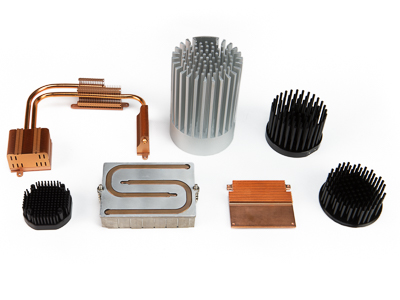Thermal Management

Another aspect of thermal management involves the type of innovative thinking that brought heat pipes into the picture. Used either externally or internally to the heatsink itself, a heat pipe is a rapid conductor of thermal energy that works through the physical properties of condensation. Like the copper base, it can operate inside the heatsink by moving heat directly from its source to the cooling fins. Outside of the heatsink, heat pipes are especially useful in limited space environments, such as that of a CPU cooling system in a notebook computer. Here, the highly effective thermal management has involved the heat pipe being attached to the CPU and connected to the remote heatsink placed in the nearest available space. In addition to these methods, there are many more creative solutions to managing components' thermal requirements.
For Your Next Project, Contact CoolianceToday!
High reliability thermal solutions & precision metal products.
